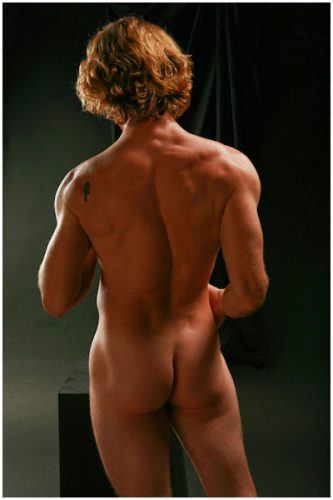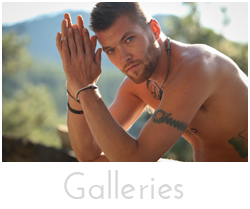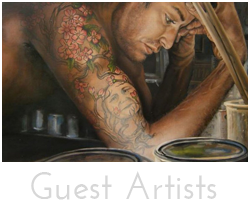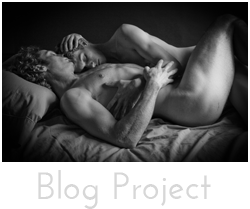 I have recently been working through the Reed Massengill book Uncovered: Rare Vintage Male Nudes and am struck by the remarkable beauty of the images, not so much the models that are paraded though out the book, but by the photographer’s skills in crafting the images. One particular photographer from the 60’s, I think who had an exceptional eye, was Al Urban, a photographer I had never even heard about. He used stark backgrounds and you can tell from the images spent quite a lot of time working with the light to create a perfect balance. As a photographer and I suppose particularly as a lighting designer, I learned early to pay close attention to light, the source, the color, the quality. Photography is a process that I think really can’t be taught. Sure, you need to learn the basic skills of how the camera functions and when you yourself have absolute control of the tool, but the remainder of what you need to know is, how do I relate to this subject and that is developed through your power of observation. The best way to learn your craft is to study the masters who have crafted images before you. I used to love fashion magazines, not for the stories, but for the remarkable lighting in the images the photographers created to sell the products. My ideal Sunday would be to buy a stack of magazines and slowly go through them page by page ripping out all the images that excited me in any way. Sometimes it’s a look in one, sometimes it’s a line in another, a makeup technique, a piece of clothing, an exposed neck. Every image had a quality that I adored. I would scatter these images across the floor and study them for hours or even days. Soon I began to understand the dynamic of what made a specific image so alluring. Soon a set of skills begins to develop that helps us to evaluate the image. Since I am so drawn to light, that is the first thing I began to explore in the image. Then I take the concept from the original inspiration, bring it into my studio and begin to explore the properties of lighting within the images. I began with hot lights because I was fascinated with the old Hollywood glamour lighting styles and knew I could maintain absolute control and could actually see the results. Then each month I added another piece of equipment that would do something else until eventually I had strobes and eventually designing my studio to channel the natural light into in certain ways. Everyone that walks into my studio seems mesmerized by the remarkable structure of light of the building. This all begins with understanding the photograph and is fed by an impulse. It’s funny as I write this the morning sun is coming over the hill and the room took on an extraordinary glow, since the trees are barren and can no longer filter on the east side of the house. I now wish I had someone naked standing before me to use this beautiful radiance as an example. And in this moment I feel in tune with the universe and as it gives this extraordinary moment just as I write about it. I digress, today’s topic was going to the about viewing a photograph for the lighting properties, but suddenly the preface on light seems to have taken up the entire blog. Tomorrow I will talk about how to evaluate images to extract their lighting values.
I have recently been working through the Reed Massengill book Uncovered: Rare Vintage Male Nudes and am struck by the remarkable beauty of the images, not so much the models that are paraded though out the book, but by the photographer’s skills in crafting the images. One particular photographer from the 60’s, I think who had an exceptional eye, was Al Urban, a photographer I had never even heard about. He used stark backgrounds and you can tell from the images spent quite a lot of time working with the light to create a perfect balance. As a photographer and I suppose particularly as a lighting designer, I learned early to pay close attention to light, the source, the color, the quality. Photography is a process that I think really can’t be taught. Sure, you need to learn the basic skills of how the camera functions and when you yourself have absolute control of the tool, but the remainder of what you need to know is, how do I relate to this subject and that is developed through your power of observation. The best way to learn your craft is to study the masters who have crafted images before you. I used to love fashion magazines, not for the stories, but for the remarkable lighting in the images the photographers created to sell the products. My ideal Sunday would be to buy a stack of magazines and slowly go through them page by page ripping out all the images that excited me in any way. Sometimes it’s a look in one, sometimes it’s a line in another, a makeup technique, a piece of clothing, an exposed neck. Every image had a quality that I adored. I would scatter these images across the floor and study them for hours or even days. Soon I began to understand the dynamic of what made a specific image so alluring. Soon a set of skills begins to develop that helps us to evaluate the image. Since I am so drawn to light, that is the first thing I began to explore in the image. Then I take the concept from the original inspiration, bring it into my studio and begin to explore the properties of lighting within the images. I began with hot lights because I was fascinated with the old Hollywood glamour lighting styles and knew I could maintain absolute control and could actually see the results. Then each month I added another piece of equipment that would do something else until eventually I had strobes and eventually designing my studio to channel the natural light into in certain ways. Everyone that walks into my studio seems mesmerized by the remarkable structure of light of the building. This all begins with understanding the photograph and is fed by an impulse. It’s funny as I write this the morning sun is coming over the hill and the room took on an extraordinary glow, since the trees are barren and can no longer filter on the east side of the house. I now wish I had someone naked standing before me to use this beautiful radiance as an example. And in this moment I feel in tune with the universe and as it gives this extraordinary moment just as I write about it. I digress, today’s topic was going to the about viewing a photograph for the lighting properties, but suddenly the preface on light seems to have taken up the entire blog. Tomorrow I will talk about how to evaluate images to extract their lighting values.



